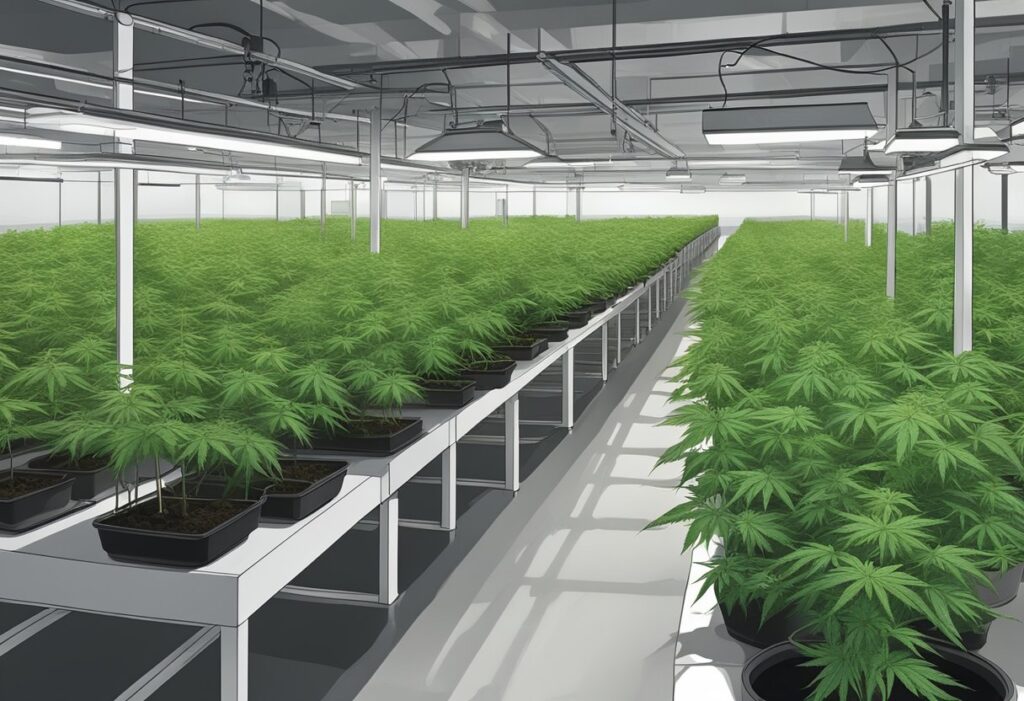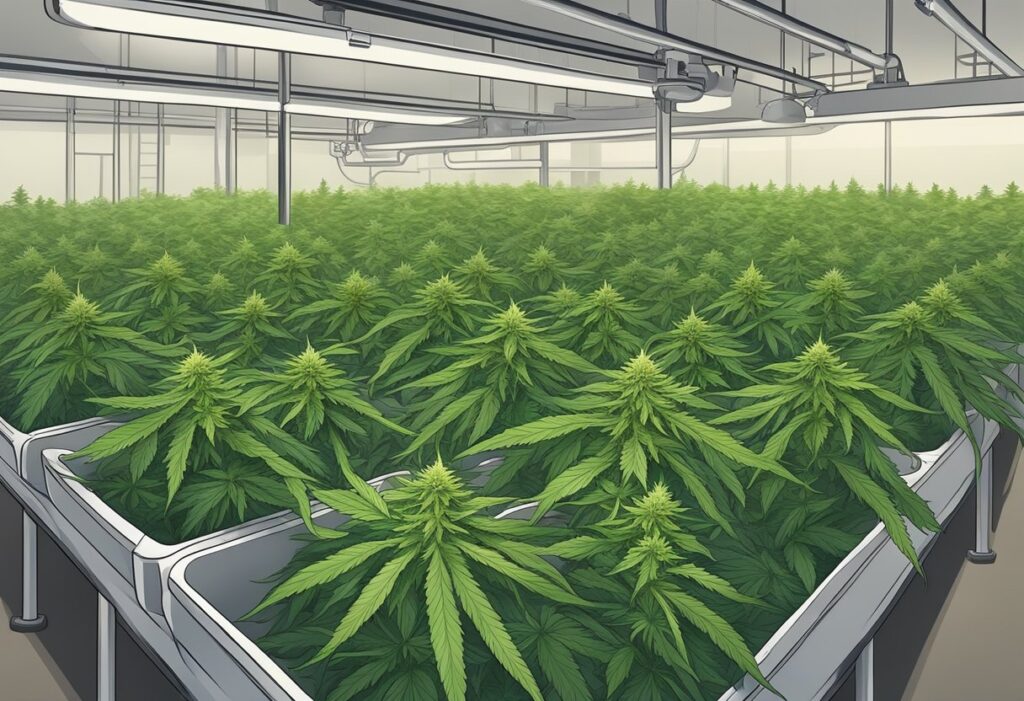
Autoflowering cannabis offers a simplified cultivation approach, but understanding its unique requirements is key to a successful harvest in Canada. Here’s what you need to know.
Autoflowers, a type of autoflowering cannabis, contain genetics from the Cannabis ruderalis species, endowing them with the ability to flower automatically. Seed to harvest time is typically faster with autoflowers, often taking just 8-10 weeks. This is due to their quick transition from the seedling to the vegetative stage, and then directly to the flowering stage without the need for a change in the light cycle, unlike their photoperiod counterparts.
For your autoflowers to thrive, it’s crucial to maintain environmental conditions within a specific range. Temperatures should be stable between 70-85°F (21-29°C), and relative humidity levels around 40-60% are ideal. Since autoflowers aren’t dependent on outdoor light changes, you can use full-spectrum LED lights to mimic the sun and provide your plants with sufficient light indoors.
When looking for autoflower seeds in Canada, choose seeds that are well-suited to the Canadian climate. Genetics play a significant role in the potential success of your plants. Autoflower seeds tend to have increased pest and mold resistance, which can be beneficial given the variable weather conditions across Canada. Always opt for high-quality seeds from reputable sources to ensure robust growth and a potentially higher yield.

Maximizing the yield and potency of your autoflowers isn’t just about planting and waiting. It involves thoughtful strategies and the optimal use of resources. Let’s dive into the specific techniques that can take your grow to the next level.
A key factor for eco-friendly growing is nutrient management. Your autoflower seeds in Canada will thrive in a nutrient-rich, living soil that mimics their natural habitat. Essential nutrients like nitrogen (N), phosphorus (P), and potassium (K), often referred to as NPK, form the core of most nutrient plans. However, don’t overlook calcium, magnesium, and trace elements.
Incorporate organic nutrients like kelp, humic acid, compost, and beneficial bacteria to enhance soil fertility. These add to the moisture retention and provide a growing medium that supports your autoflowers from seed to harvest.
To keep energy costs in check while ensuring robust growth, consider the following lighting strategies:
Daily Light Integral (DLI) is a measure of the total amount of light plants receive in a day, and managing it correctly is key for enhancing potency.
A hands-on approach to plant training can significantly affect your harvest. Techniques such as pruning and training can increase the number of bud sites and improve light penetration. Here are two specific strategies:
Regular attention to pruning away unnecessary foliage ensures optimal air circulation and light exposure, key factors for both yield and potency in your eco-friendly grow.

In growing autoflower seeds in Canada, understanding when to harvest, how to cure, and the best ways to store your yield are crucial for maintaining quality. From locking in the desired aromas to ensuring the effects are optimal, these steps are key to a successful crop.
Your patience in growing autoflowers pays off when it’s time to harvest. Examine the trichomes with a magnifying glass; they should mostly be cloudy with some amber, indicating peak THC levels. Also, watch for pistils to turn brown, signaling readiness. Aim to strike a balance — harvest too early, you miss out on potency; too late, and you might experience a more sedative effect than desired.
Drying and curing are vital for developing your autoflower’s aroma and effects. After harvesting:
For storing your cured buds, you want to maintain their quality. Use airtight containers kept in a cool, dark place to protect from light and temperature fluctuation. Regularly check the moisture levels and look for any signs of mold. Keep containers airtight to preserve the aromas and protect from external smells.
For eco-friendly cultivation in Canada, you should consider using natural pest management techniques and organic soil. Your grow should make the most of natural light cycles and moderate temperatures during the short growing season to reduce energy usage.
To grow autoflowering cannabis organically, you must use organic soil enriched with compost and natural fertilizers. Avoid synthetic pesticides and opt for natural alternatives. Regular crop rotation can also improve soil health and prevent the spread of diseases.
Strains like White Widow Autoflower are well-suited for the Canadian climate. These varieties are resilient, have a fast growth cycle, and can be grown successfully with minimal intervention, making them ideal for eco-friendly cultivation.
Yes, using rainwater collection systems for irrigation and solar panels to power any supplemental lighting can make greenhouse growing more sustainable. Insulating your greenhouse properly will also help maintain consistent temperatures using less energy.
Initial setup costs may include organic soil, natural fertilizers, and possibly a greenhouse. However, these can be offset over time by the savings from reduced water usage, lower energy bills, and the elimination of synthetic fertilizers and pesticides.
We ship and deliver world wide via USPS and various couriers.
We offer a wide range of secure and anonymous online payment options.
We care about you, our customer. Please contact us with any questions or concerns.
Find out more about the benefits of being a loyal and regular customer.
WE ARE EVERY GROWERS ONE STOP SHOP TO ACQUIRE PREMIUM CANNABIS SEEDS FOR SALE IN THE USA, CANADA AND AUSTRALIA

Farmers Lab Seeds 2024, | All Right Reserved
Seeds are sold as novelty items, souvenirs, and collectibles. They contain 0% THC. We encourage our customers to check the legislation in their Country, State, Province, and Municipality prior to purchasing items from our store. We do not provide growing information.
All seeds are sold as hemp, and lab tested under 0.3% THC. This product is not for use by or sale to persons under the age of 21. This product should be used only as directed on the label. It should not be used if you are pregnant or nursing. Consult with a physician before use if you have a serious medical condition or use prescription medications. A Doctor’s advice should be sought before using this and any supplemental dietary product. All trademarks and copyrights are property of their respective owners and are not affiliated with nor do they endorse this product.
These statements have not been evaluated by the FDA. This product is not intended to diagnose, treat, cure or prevent any disease. Individual weight loss results will vary. By using this site, you agree to follow the Privacy Policy and all Terms & Conditions printed on this site. Void Where Prohibited by Law.